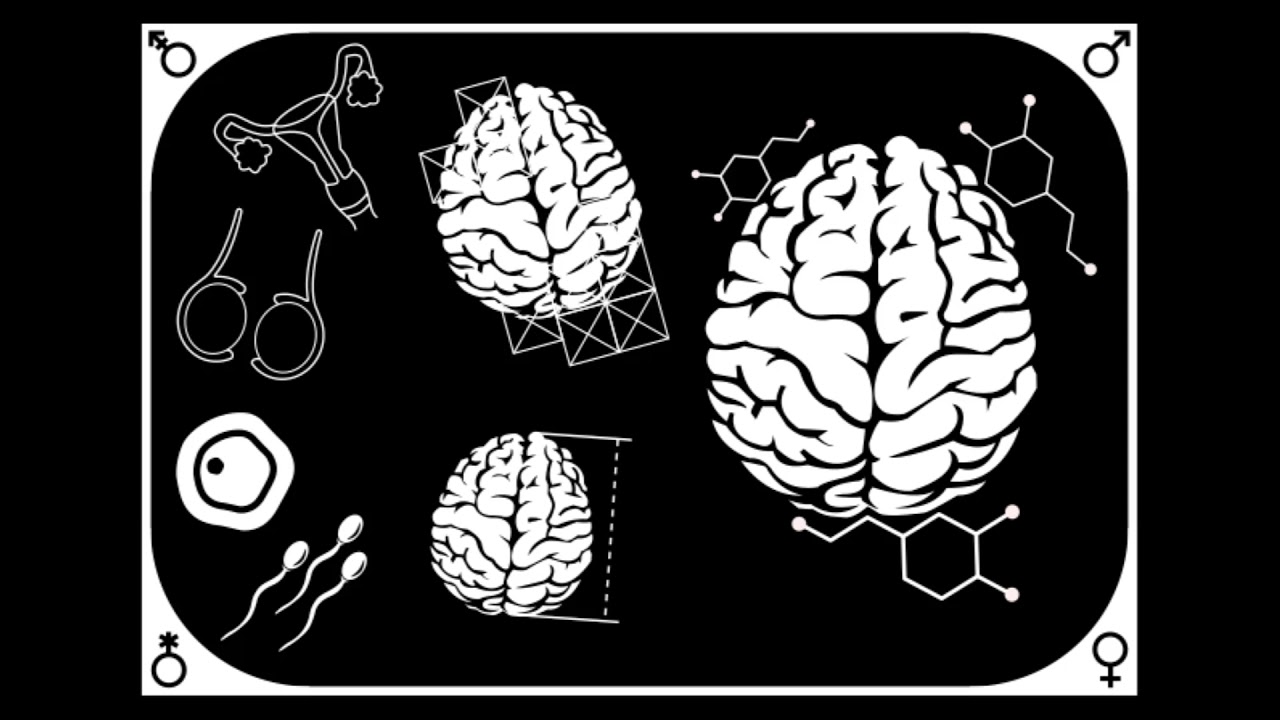Sex Differences - Its Role In Drug Addiction And New Treatments
The cost to society of addiction and related problems with impulse control is estimated to be $600 billion per year. People's drug use goes up and down with changes in how easy it is to get drugs and how much they cost. There are also sex differences, but the direction of these differences doesn't always stay the same.
Author:Suleman ShahReviewer:Han JuDec 03, 2022119 Shares1.6K Views

The cost to society of addiction and related problems with impulse control is estimated to be $600 billion per year.
People's drug use goes up and down with changes in how easy it is to get drugs and how much they cost. There are also sex differences, but the direction of these differences doesn't always stay the same.
However, in recent years, men have used alcohol and stimulant drugs more than women have, while nicotine usage has become more evenly distributed between the sexes. Women now misuse prescription medicines more than men do.
Studies on animals, on the other hand, have shown that drug-seeking behavior follows more consistent patterns. This suggests that females are more likely than males to start and keep doing drug-seeking activities and that they respond better to therapy.
Research on both animals and people has been carefully looked at to find out how gender affects drug use, how hormones work, and what this means for therapy.
A recent discovery that is crucial to our understanding of sex differences in drug abuse is that differences in drug use depend on a variety of factors, including drug type, behavioral interventions used, and sociocultural influences. Things like compulsive and impulsive behavior (e.g., behavioral dyscontrol), which are at the root of addiction, are strong predictors of addiction.
Sex And Hormonal Influences On Drug Addiction
Sex differences in drug addiction have gotten significant attention since the early studies were evaluated over 15 years ago.
Animal and human research has shown sex variations in drug addiction. In non-human animals, hormonal variations favor greater avidity in females than in males.
Human drug addiction research is less apparent because of hormonal and sociocultural influences. In women, estrogen increases the effects of drug seeking and drug reward, while progesterone (PRO) lowers drug seeking to male levels.
Male hormones (such as testosterone) have minimal effect on drug addiction. This article talks about research on the differences between men and women and how hormones affect addiction in both animals and humans.

Sex Differences in the Brain
Laboratory Animals
Preclinical results on drug abuse susceptibility have been thoroughly explored. These reviews show sex variations in each step of addiction, from beginning (acquisition) through maintenance, escalation, withdrawal, and relapse.
Female animals are more prone to drug-seeking at most stages. Males are more susceptible to drug withdrawal and other negative consequences than females.
Consistent sex differences in animal studies on addiction are small. Observing sex differences in drug addiction studies requires drug-naive animals, low-to-moderate drug dosages, and/or challenging reinforcement regimens. High dosages or easy pharmacological availability reduce the likelihood of sex disparities.
Humans
Females usually take more drugs than men, but to varying degrees with different substances.
In recent years, women were more likely than men to take prescription medicines such as sedatives, tranquilizers, and painkillers, while men used illegal substances.
Females are more addicted to alcohol, amphetamine, cannabis, cocaine, nicotine, opioids, and phencyclidine than males. Based on studies with rats and monkeys, men are more likely to have withdrawal symptoms than women.
Sex Differences In Impulsivity And Drug Addiction
Impulsivity is a type of bad behavior control that is linked to attention deficit/hyperactivity disorder (ADHD), drug abuse, compulsive gambling, and eating disorders.
Impulsivity may be divided into impulsive decisions and actions. An impulsive decision is when you choose a small payoff right away over a bigger payoff later. An impulsive action is when you can't stop a reaction.
Both animal and human preclinical research link impulsivity to drug misuse. Greater impulsivity is linked to drug misuse, while lower impulsivity predicts better treatment effectiveness. Animal and human studies on impulsivity are addressed below.
Impulsive Choice
Impulsive choice is tested by comparing a small-immediate incentive with a large-delayed reward across a range of delays. One way to measure impulsive decisions is to see how quickly a person dismisses a substantial option when it's delayed.
A steeper discounter (more impulsive) would depreciate the bigger or delayed option and favor the smaller-sooner alternative.
Less impulsive deep discounters would wait longer for a bigger payoff. Impulsive decisions (steeper discounting) are linked to drug abuse and less effective treatment, which may explain why female animals and people are more likely to choose drug abuse over healthy alternatives.
Effects In Laboratory Animals
In one of the earliest studies of how men and women make decisions on the spot, females were more likely to ignore the bigger reward that would come later than men.
Perry et al. did similar research on impulsive food choices using a two-lever operant training chamber. One lever gave a small amount of food right away, and the other gave a larger amount of food later.
When this experiment was repeated with different groups of male and female rats, there were no sex differences. This was probably because of a ceiling effect, since cocaine made people more impulsive than food.
Perry et al. looked at male and female rats that were chosen for high or low impulsivity (HiI vs. LoI) based on the food delay-discounting test, self-administering cocaine, and resuming cocaine seeking after being primed with cocaine (a model of relapse).
HiI males and females learned to self-administer cocaine faster than LoI males and females, and HiI females wanted cocaine more when they were back in the group (Hi, LoI).
Koot et al. studied mice that were sorted into steep (impulsive) vs. shallow (less impulsive) discounters. Females were more impulsive in the steep-discount group. While there is little research on animal impulsivity, the findings consistently show that females are more impulsive than males.
Effects In Humans
Humans have mixed sex variations in spontaneous choice. When choosing between actual (lottery-based) and hypothetical financial consequences, women are more impulsive than men. Some research indicates no changes.
Males were more impulsive than women when choosing hypothetical money, but when actual money was based on a lottery, men dismissed greater monetary values more than women. Women are more impulsive with hypothetical benefits than men with real rewards.
Animal studies imply that females are more impulsive than males throughout the transitional stages of addiction, such as start, relapse, and reinstatement. Women were more impulsive when they thought about possible rewards, while men were more impulsive when they thought about real prizes.

Gender Differences in Communication
Impulsive Action
Impulsive action is an inability to prevent non-productive or inappropriate behaviors. In humans and animals, the stop-signal reaction time (SSRT) and Go/No-go tests are used to measure impulsivity. Failure to suppress an incorrect reaction is labeled impulsive behavior.
During the SSRT, a subject has to stop a continuing "go" reaction when a "stop" signal is given. This makes the task harder than the Go/No-go task.
Impulsive activity increases mistakes of commission, say experts (i.e., failures to inhibit responding to an inappropriate stimulus in SSRT, more responding during a no-go period, and longer stop-signal reaction times). These challenges resemble drug relapse when people can't resist drug-related signals (e.g., accepting a drink offer).
Result In Laboratory Animals
Male and female rats were compared on a Go/No-go task for food or i.v. cocaine infusions, and no differences were detected in responding to food reward during the no-go interval (impulsivity measure).
Females responded more to cocaine infusions during the no-go phase, consistent with impulsive decisions. In the five-choice serial reaction time task (5-CSRTT), there were no differences between the sexes during the learning phase or the hard phase, when long intervals between trials (ITI), stress, and free food were tested.
As demonstrated by premature response (action impulsivity), females were more impulsive than males. In another 5-CSRTT study of young vs. adult rats, no sex or age differences were detected in task acquisition. However, females produced more premature responses than males (long ITI).
Impulsiveness research is linked to sex hormones. In this research, Jentsch and Taylor examined intact and gonadectomized male and female rats in a 5-CSRTT study. During learning and testing (long ITI), intact males responded more quickly than gonadectomized females.
Both gonadectomy and ovariectomy enhanced impulsive behavior in rats, indicating that testosterone and estrogen are involved. According to Bayless et al., males demonstrated more impulsivity (premature responding) than females on the 5-CSRTT. So, sex and hormones may affect impulsiveness.
Result In Humans
Depending on the approach, sex differences in human impulsiveness tests are mixed. In the Go/no-go technique, males committed more inhibitory mistakes than females, although in other trials there were no sex differences. Continuous performance task (CPT) results were similar.
In an eight-study meta-analysis of ADHD children, males committed more errors of commission (i.e., were more impulsive) than girls. In the SSRT, females exhibited longer response times (were more impulsive) than males, while other investigations revealed no sex differences.
Thus, sex differences in impulsiveness may be procedure-dependent. Males were more impulsive when stopping "go" reactions that were already happening (e.g., CPT and Go/No-go tasks), but females were more impulsive when starting a response (higher reaction times) on the SSRT task.
Gender And Age Differences In Behavioral Dysregulation And Drug Addiction
Adolescence is when biological (hormonal) and behavioral (impulsivity, risk-taking) changes begin in animals and humans, and they are crucial elements in drug addiction.
Earlier studies of drug addiction looked at how lab animals and teenagers and adults reacted to things that were good and bad.Teenagers are more sensitive to the rewarding benefits of drugs but less sensitive to their unpleasant consequences.
Animal and human research shows that teenagers are more susceptible than adults to other drug-predictive variables, such as impulsivity and obsessive sweet consumption. Adolescence in rats is just 30 days, making it difficult to research sex variations in addictive behavior.
The challenge of researching human teenagers limits future research on behavioral dyscontrol and adolescence vs. adulthood in humans. We'll talk about how drinking alcohol affects animals and people differently depending on their age. This is important because alcohol abuse is common and well-studied among teenagers.
What Happens In Laboratory Animals?
Adolescent rats self-administer twice as much alcohol as adults, according to research. Early alcohol intake in teenage rats induced more impulsive and hazardous decisions in adults, compared to control rats without adolescent alcohol availability.
Female rats drink more alcohol as adults, contrary to human research. Male adolescents consume more alcohol than adults owing to lower sensitivity to alcohol's sedative/hypnotic, hypothermic, motor-impairing, anxiolytic, and anxiogenic effects.
This lower sensitivity, mixed with a somewhat greater rate of alcohol metabolism, may allow adolescents to drink more. Adolescent rats are more susceptible to addiction than adults, but the converse is also true.
Several studies have shown that teenage drug exposure enhances adult drug misuse in animals and humans. Few studies examine sex differences in adolescent and addiction rat studies.
In one study, teenagers self-administering cocaine responded better to exercise than adults. "Physical Exercise" provides treatment specifics.
What Happens In Humans?
According to one study, young people (ages 18–25) consume more alcohol than older individuals (ages 35–54). In the Naimi research, binge drinking (> 5 drinks per session) was two to three times more common in younger individuals than older ones, with men significantly outnumbering females across all age categories.
The age of alcohol exposure was correlated with other drug use risk variables, including impulsiveness. Adolescent alcoholics are more impulsive than controllable. In early and later drug usage, impulsivity was noted.
Early alcohol exposure may enhance impulsive and dangerous behavior, and adolescence may be a pivotal era when substance use changes prefrontal brain development, leading to greater impulsivity. The earlier the age of first alcohol exposure, the worse the prognosis for alcohol consumption in adulthood due to ease of availability.
Second-hand smoke in children and teens has nicotine levels equivalent to smoking. Thus, parental smoking may increase teen smokers' healthrisks.
Dom et al. found that the age at which people start drinking alcohol is a good predictor of impulsive drug use.Compared to controls, this rise was steeper (i.e., impulsive choice was larger) for alcoholics whose alcohol issues began earlier in life(<25) but not for alcoholics whose problems started later (>25).
Due to the small number of women in the study, gender differences could not be found. However, the data showed a link between alcoholism and making hasty decisions that changed with age.Early alcohol exposure may enhance impulsive and hazardous behavior, leading to greater drug misuse.
Animal and human studies show that age (adolescence vs. adulthood) is a critical sensitivity component that interacts with sex and impulsivity. Since men drink more alcohol than females throughout adolescence, this may increase their vulnerability to alcohol misuse later in life.
People Also Ask
How Are Sex Differences In Behavior Rooted?
Even though gender socialization may make the differences between how young boys and girls act seem bigger, these differences are deeply rooted in our biology and evolution.
Are There Sex Differences In Mental Abilities?
According to empirical evidence, there is only a very small gender difference in overall mental aptitude, although males excel in visuospatial activities while women excel at verbal and perceptual speed tests.
Do Sex Differences Exist?
There are various ways in which men and women differ. These variations include both psychological characteristics and biological phenotypes. Environmental variables have an effect on some of these variations. But there are biologically-based basic distinctions between the sexes.
How Do Human Males And Females Differ In Their Sex?
In contemporary culture, biological sex and gender are often confused. Females, who have ovaries and create eggs, are distinguished from males, who have testes and generate sperm. Mammals normally have XX chromosomes for females and XY chromosomes for males.
Conclusion
Sex differences in behavioral dyscontrol were explored in connection to drug addiction, along with impulsivity, compulsive binge consumption of sweet substances, and age (adolescence). Each susceptibility factor affects behavioral dyscontrol and drug addiction.
These individual traits explain why some people become addicted to drugs and othersdon't, but they may also add up to make prevention and treatment very hard.
These characteristics explain why some people develop addictions and others don't, which may help with prevention and therapy. Recent research suggests that drug-prone people are more vulnerable to addiction than those who are less sensitive to drugs' unpleasant effects.
New treatments take into account impulsive behavior and other types of behavioral dyscontrol, like excessive reward seeking, as well as the effects of sex and hormones.
Promising treatment strategies include environmental enrichment (social and physical), such as exercise, or brief exposure to negative environmental consequences (e.g., punishment); targeting individual differences with medications repurposed to address specific vulnerability factors, such as hormonal status (PRO), anxiety, or impulsivity (ATO); and combining behavioral and pharmacological therapies.

Suleman Shah
Author
Suleman Shah is a researcher and freelance writer. As a researcher, he has worked with MNS University of Agriculture, Multan (Pakistan) and Texas A & M University (USA). He regularly writes science articles and blogs for science news website immersse.com and open access publishers OA Publishing London and Scientific Times. He loves to keep himself updated on scientific developments and convert these developments into everyday language to update the readers about the developments in the scientific era. His primary research focus is Plant sciences, and he contributed to this field by publishing his research in scientific journals and presenting his work at many Conferences.
Shah graduated from the University of Agriculture Faisalabad (Pakistan) and started his professional carrier with Jaffer Agro Services and later with the Agriculture Department of the Government of Pakistan. His research interest compelled and attracted him to proceed with his carrier in Plant sciences research. So, he started his Ph.D. in Soil Science at MNS University of Agriculture Multan (Pakistan). Later, he started working as a visiting scholar with Texas A&M University (USA).
Shah’s experience with big Open Excess publishers like Springers, Frontiers, MDPI, etc., testified to his belief in Open Access as a barrier-removing mechanism between researchers and the readers of their research. Shah believes that Open Access is revolutionizing the publication process and benefitting research in all fields.

Han Ju
Reviewer
Hello! I'm Han Ju, the heart behind World Wide Journals. My life is a unique tapestry woven from the threads of news, spirituality, and science, enriched by melodies from my guitar. Raised amidst tales of the ancient and the arcane, I developed a keen eye for the stories that truly matter. Through my work, I seek to bridge the seen with the unseen, marrying the rigor of science with the depth of spirituality.
Each article at World Wide Journals is a piece of this ongoing quest, blending analysis with personal reflection. Whether exploring quantum frontiers or strumming chords under the stars, my aim is to inspire and provoke thought, inviting you into a world where every discovery is a note in the grand symphony of existence.
Welcome aboard this journey of insight and exploration, where curiosity leads and music guides.
Latest Articles
Popular Articles
